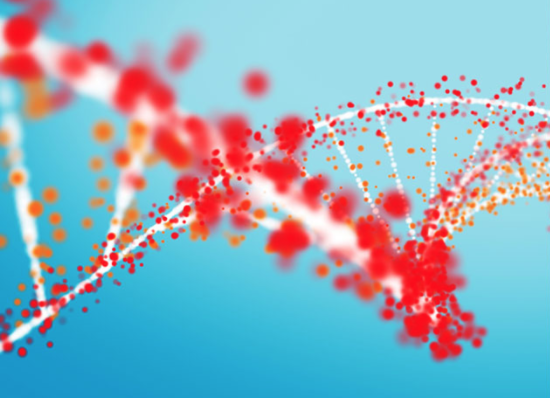“Evolution of Escherichia coli Expression System in Producing Antibody Recombinant Fragments”
ARVYS Proteins Inc. provides a full spectrum of protein biochemistry services – recombinant protein expression in bacterial, insect and mammalian cells, protein purification, refolding, assays and assay development, protein characterization, fermentation and endotoxin removal.
Outsource your protein biochemistry projects to ARVYS and enjoy superior results, team expertise and customer support after project completion.
(This article belongs to the Special Issue Monoclonal Antibodies and Their Functional Fragments in Research, Diagnosis and Therapy)

Abstract
Antibodies and antibody-derived molecules are continuously developed as both therapeutic agents and key reagents for advanced diagnostic investigations. Their application in these fields has indeed greatly expanded the demand of these molecules and the need for their production in high yield and purity. While full-length antibodies require mammalian expression systems due to the occurrence of functionally and structurally important glycosylations, most antibody fragments and antibody-like molecules are non-glycosylated and can be more conveniently prepared in E. coli-based expression platforms. We propose here an updated survey of the most effective and appropriate methods of preparation of antibody fragments that exploit E. coli as an expression background and review the pros and cons of the different platforms available today. Around 250 references accompany and complete the review together with some lists of the most important new antibody-like molecules that are on the market or are being developed as new biotherapeutics or diagnostic agents.
- coli as Microbial Expression Stem for the Production of Antibody Fragments
- coli is one of the most well-established cell factories for the production of recombinant proteins (RPP) [43]. Currently, many molecular tools and protocols are available for the high-level production of heterologous proteins, including a vast catalog of expression plasmids and of engineered strains and many cultivation strategies. From a theoretical point of view, the steps needed for obtaining a recombinant protein are pretty straightforward. The gene of interest (GOI) is cloned in whatever available expression vector, is transformed into the host of choice, expression is induced and the protein is then ready for purification and biochemical, structural and functional characterization. Practically, however, many things can go wrong such as poor growth of the host, inclusion body (IB) formation, protein inactivity, and even lack of protein expression. Choosing the perfect combination is not possible a priori, thereby multiple conditions should be empirically tested to obtain a soluble and active recombinant protein.
Conclusions
The ever-increasing applications of antibody-based molecules as both therapeutic agents and key reagents for advanced diagnostic investigations have greatly expanded the demand of these crucial classes of molecules and the need for their production in high yield and purity. While the preparation of whole antibody molecules requires eukaryotic expression systems, antibody fragments like Fabs, scFvs and other similar surrogates that lack the glycosylation, can be conveniently prepared in E. coli backgrounds. The recent evolution of E. coli expression systems reinforces the use of this easy and cheap host-microorganism for an advisable production of antibody fragments in recombinant form. In Table 2, we report an updated list of antibody fragments described so far and the expression conditions utilized for their production, including expression localization (periplasmic, cytoplasmic), the type and format of antibody fragment, the vectors used, the inductor, the temperature and time of expression, the strain, the medium, the use of chaperones and the overall recovery. As explained in this review and reported in Table 2, during the last years, huge efforts have been done to adapt at best the E. coli machinery to the production of these “magic bullets” molecules, and a contribution has been also provided by structural biology and bioinformatics in addition to advanced molecular genetics, basic biology and chemical biology. Notable progress gas also emerged from the ever-increasing understanding of the unique structural features of the Ig-like domains as obtained by X-ray crystallography and accurate homology modeling studies. The structural knowledge of such basic units indeed provides a relevant contribution in the construct design for tuning the physicochemical and affinity properties and to improve the stability, the efficacy and the clinical potential of antibody-like molecules. Despite the high degree of similarity between the different components of this class of proteins and the growing availability of innovative strategies and robust tools, such as oxidizing mutant strains or plasmids for the overexpression of chaperones and foldases, and new growth media, it is evident that there is not a universal E. coli-based methodology for their efficient production, therefore, a trial and error optimization process is necessary for the determination of the successful experimental settings and to achieve scalability of antibody fragment expression processes at an industrial level.
To read the full journal, click here.
ARVYS Proteins Inc. provides a full spectrum of protein services to the life science, pharmaceutical and biotechnology communities. Our work experience encompasses almost every aspect of protein biochemistry allowing us to contribute to projects regardless of whether they are at early research or late development stages. We can be your partner in:
– generation and expression of recombinant proteins in bacterial, baculovirus and mammalian expression systems,
– large-scale fermentation,
– cell culture,
– purification of recombinant proteins, antibodies or naturally occurring proteins,
– refolding from inclusion bodies,
– improvement of protein stability,
– protein labeling with fluorescent, biotin and enzyme probes,
– endotoxin removal and testing for in vivo studies,
– protein characterization to monitor its integrity and functionality
ARVYS Proteins Inc. is a Contract Research Organization (CRO) that Specializes in Custom Protein Services for Drug Discovery and Life Science Research.




